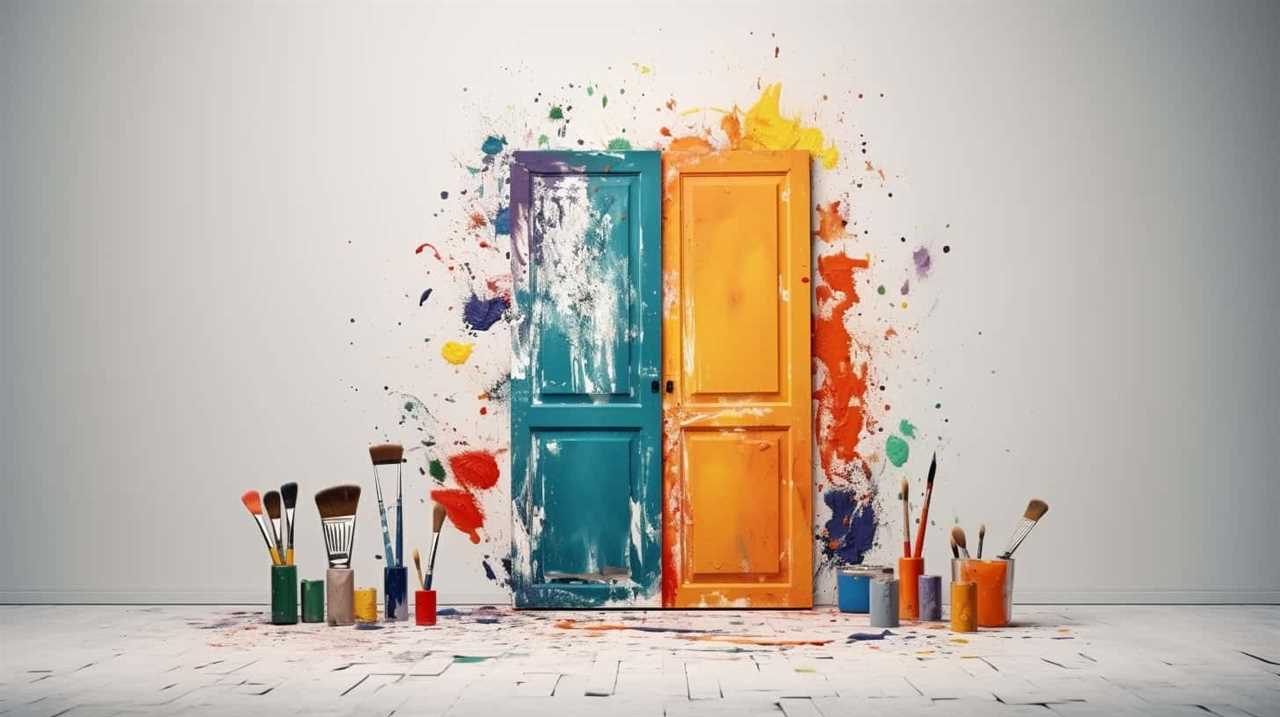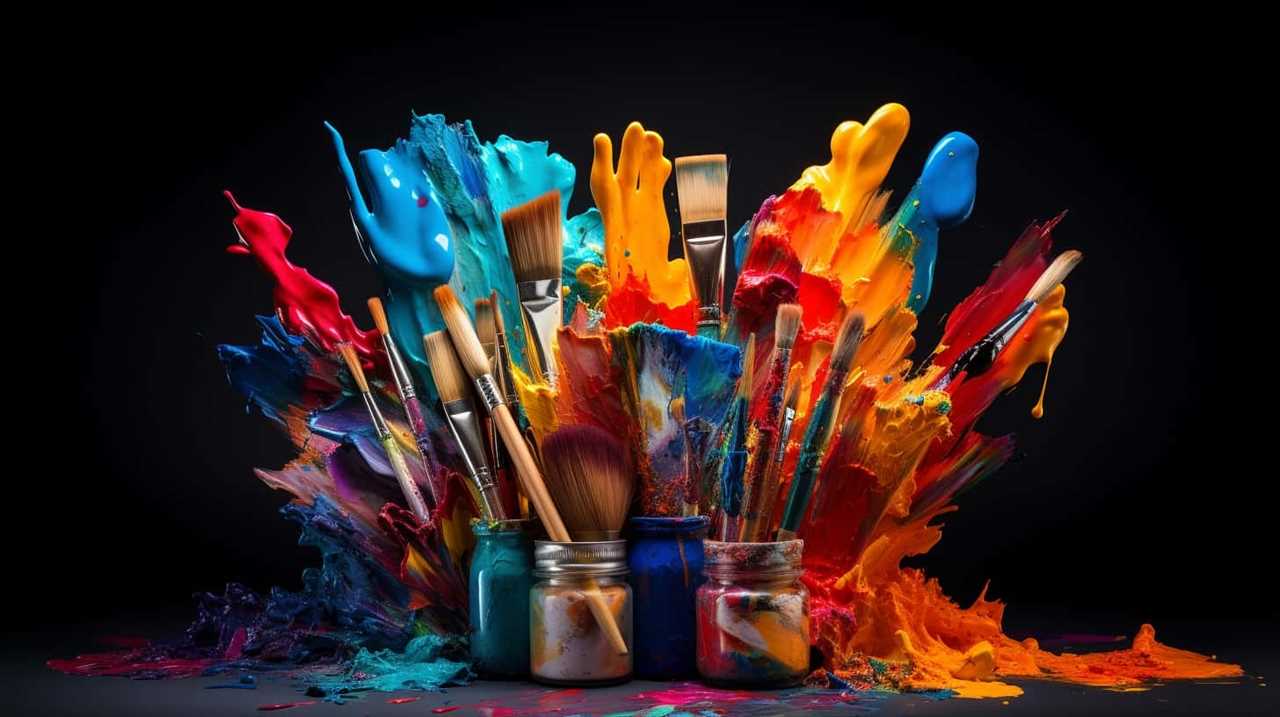Welcome to “Exploring the Dynamics of the Art Market: Uncovering the Mysteries of Galleries and Sales,” where we embark on a journey to navigate through the vast and intricate world of art. This guide aims to explore the fundamental operations of galleries and sales, shedding light on the mysteries that have been hidden for so long.
From understanding the role of galleries in art sales to uncovering pricing strategies and market trends, we will empower ourselves to make informed decisions as art enthusiasts and collectors.
By building relationships with artists and collectors, marketing and promoting exhibitions, and delving into the commercialization of the art market, we will navigate the challenges and seize the opportunities that lie ahead.
Get ready to uncover the mysteries that lie within the art market and embark on a path towards liberation and enlightenment.

Key Takeaways
- Galleries serve as intermediaries between artists and buyers, providing artist representation and handling all aspects of the transaction.
- Curating art collections involves carefully selecting and organizing artworks to create a cohesive experience, with a focus on identifying artists with growth potential and conducting thorough art market analysis.
- Pricing strategies and art market trends influence the value and saleability of art, with competitive pricing attracting buyers for emerging artists and limited editions creating a sense of scarcity and increased perceived value.
- Building relationships with artists and collectors through networking, studio visits, and gallery openings is crucial for fostering connections and opportunities for collaboration.
The Role of Galleries in Art Sales
Galleries play a crucial role in facilitating art sales. They serve as intermediaries between artists and buyers, providing a platform for artists to showcase their work and connect with potential buyers. One of the key functions of galleries is curating exhibitions. They carefully select and organize artworks to create a cohesive and visually appealing experience for viewers. By showcasing artists’ works in curated exhibitions, galleries enhance the visibility and marketability of the artworks, attracting the attention of collectors and art enthusiasts.
Furthermore, galleries provide artist representation, acting as advocates for the artists they represent. They negotiate sales on behalf of the artists and handle all aspects of the transaction, including pricing, contracts, and logistics. This allows artists to focus on their creative process while galleries take care of the business side of art sales. Additionally, galleries often have established networks and relationships with collectors, museums, and other art institutions. This network can greatly benefit artists, as galleries can facilitate connections and opportunities for exposure and collaboration.
Curating Art Collections for Buyers
When curating art collections for buyers, we carefully select and organize artworks to create a cohesive and visually appealing experience. As curators, we understand the importance of considering art investment and art market analysis when assembling a collection. Our goal is to not only present buyers with aesthetically pleasing artworks but also to provide them with valuable assets that can appreciate over time.
Art investment involves identifying artists with potential for growth and acquiring their works before their value increases significantly. To achieve this, we conduct thorough art market analysis, examining trends, market demand, and the reputation of artists and galleries. By staying informed about emerging artists, innovative techniques, and evolving styles, we can guide buyers towards art that has the potential to appreciate in value.
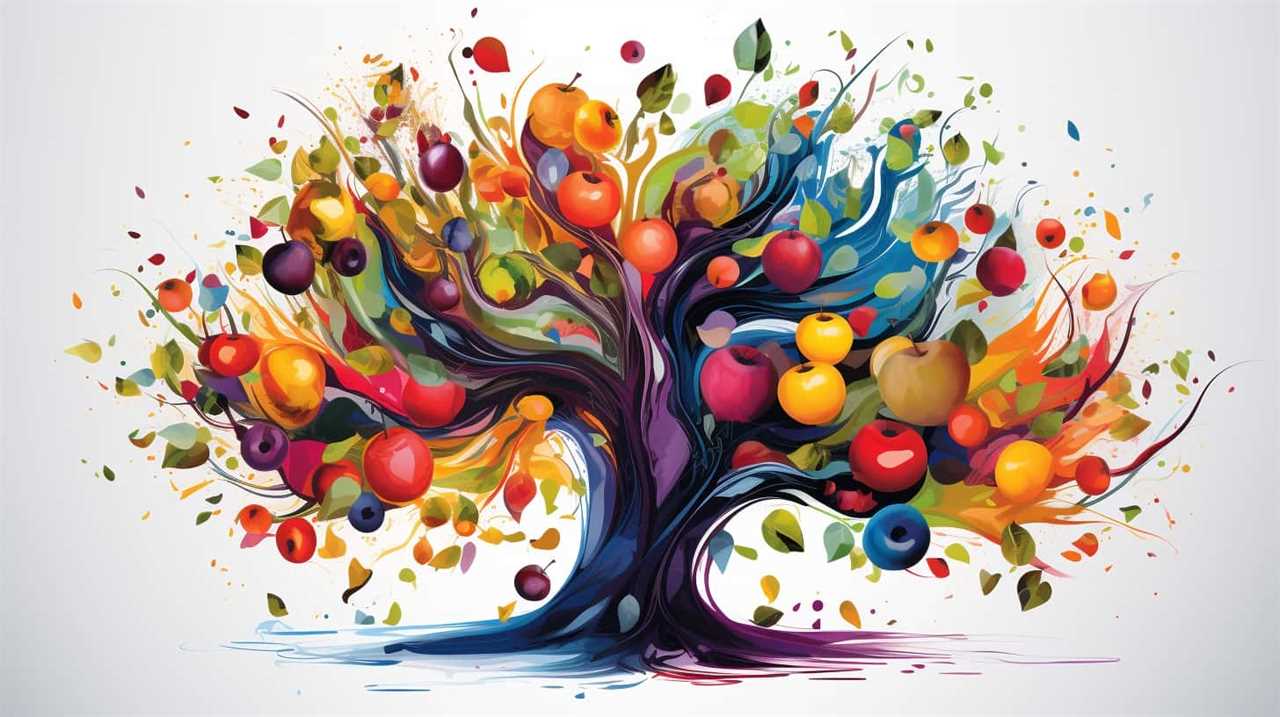
In curating art collections, we also focus on creating a cohesive narrative or theme. This involves considering factors such as the style, medium, and subject matter of the artworks. By carefully selecting and arranging pieces that complement each other, we create a visually appealing experience that engages the viewer and enhances the overall value of the collection.
As we delve into the subsequent section about pricing strategies and art market trends, we’ll explore how these factors influence the value and saleability of curated art collections.
Pricing Strategies and Art Market Trends
As curators, we carefully consider pricing strategies and art market trends to ensure the value and saleability of the curated art collections we present to buyers. Art valuation and art investment are crucial elements that guide our decision-making process. By understanding the current art market trends and utilizing effective pricing strategies, we aim to maximize the value of the artworks while ensuring they are accessible to potential buyers.
To illustrate the importance of pricing strategies and art market trends, let’s consider the following table:
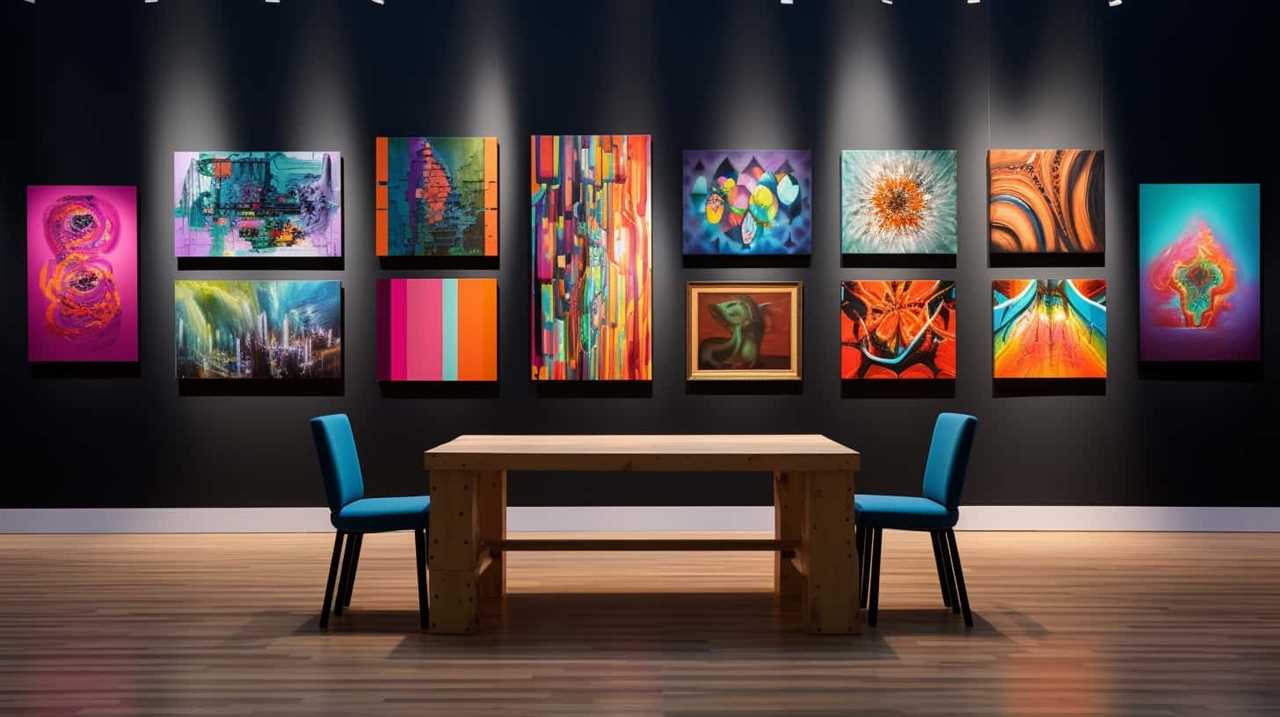
| Pricing Strategy | Art Market Trend |
|---|---|
| Competitive pricing | Emerging artists |
| Tiered pricing | Online art sales |
| Limited editions | Contemporary art |
Competitive pricing is often employed when promoting artworks by emerging artists. This strategy allows us to attract potential buyers by offering lower prices compared to established artists. It also helps to create a sense of urgency and exclusivity, driving the demand for these artists’ works.
Tiered pricing is commonly used in online art sales, where artworks are priced differently based on factors such as size, medium, and popularity. This strategy caters to a wider range of buyers, as it offers options at different price points.
Limited editions are often utilized in the sale of contemporary art. By limiting the number of reproductions or prints available, we can create a sense of scarcity and increase the perceived value of the artwork.
Building Relationships With Artists and Collectors
When it comes to building relationships with artists and collectors in the art market, there are several key points to consider.

First, networking at art fairs allows for meaningful interactions and the opportunity to connect with both artists and collectors.
Second, studio visits provide a unique insight into an artist’s creative process and can foster stronger relationships.
Networking at Art Fairs
At art fairs, we actively engage with artists and collectors, building relationships that foster connections and opportunities for collaboration. Networking at these events is crucial for artists, as it allows them to showcase their work to a wider audience and connect with potential buyers and gallery owners.
For collectors, it provides a chance to discover new talent and expand their collections. To make the most of networking opportunities at art fairs, it’s essential to have a clear strategy. This involves doing thorough research on the participating artists and galleries, attending relevant events and talks, and actively seeking out conversations with artists and collectors.

Studio Visits and Connections
To deepen our connections with artists and collectors, we make it a priority to schedule studio visits and engage in meaningful conversations about their work and artistic process. By visiting their studios, we gain a deeper understanding of the artist’s creative environment, which allows us to appreciate their work on a more personal level. These visits also provide an opportunity for us to establish trust and build lasting relationships with artists. Additionally, studio visits often lead to exciting collaborations, where we can work closely with artists to create unique pieces or exhibitions. Building a network of artists is crucial in the art world, as it allows for the exchange of ideas, resources, and opportunities. Through these connections, we can foster a vibrant and dynamic community that supports and uplifts each other.
| Benefits of Studio Visits | Importance of Artist Networks |
|---|---|
| Gain deeper understanding of artist’s work | Exchange of ideas and resources |
| Establish trust and build relationships | Opportunities for collaborations |
| Appreciate artwork on a personal level | Support and uplift the art community |
| Foster vibrant and dynamic community | Expand knowledge and perspective |
Collaborating on Creative Projects
How can we actively engage in creative collaborations with artists and collectors to build strong relationships and enhance our presence in the art market?
Building creative partnerships and engaging in artistic collaborations is a powerful way to establish meaningful connections with artists and collectors. By actively seeking opportunities to collaborate on projects, whether it be through joint exhibitions, artist residencies, or co-creating new works, we can foster a sense of shared vision and purpose. Collaborations not only allow us to tap into the unique perspectives and talents of artists, but also provide an avenue for us to showcase our own creativity and innovation.
By building strong relationships with artists and collectors through these collaborations, we can enhance our reputation and visibility within the art market, ultimately leading to more opportunities for marketing and promoting art exhibitions.

Transition: Now that we’ve explored the importance of creative collaborations, let’s delve into the next crucial aspect of navigating the art market: marketing and promoting art exhibitions.
Marketing and Promoting Art Exhibitions
When it comes to marketing and promoting art exhibitions, there are several key points to consider.
Firstly, social media strategies play a vital role in reaching a wider audience and generating buzz around the event.
Identifying the target audience is crucial in tailoring the promotional campaigns to effectively engage with potential attendees.

Lastly, collaborative efforts with other artists, galleries, and organizations can amplify the reach and impact of the exhibition, allowing for cross-promotion and shared resources.
Social Media Strategies
Our gallery successfully promotes art exhibitions by utilizing effective social media strategies. These strategies allow us to reach a wider audience and generate buzz around our exhibitions. Here are three key elements of our social media approach that evoke an emotional response in our audience:
- Collaborating with influencers: We believe in the power of influencer partnerships to amplify our message and connect with our target audience. By partnering with influencers who’ve a genuine interest in art, we can leverage their influence and reach to create excitement and anticipation for our exhibitions.
- Engaging content creation: We understand that content is king in the social media world. To captivate our audience, we invest in creating visually compelling and thought-provoking content. This includes behind-the-scenes videos, artist interviews, and sneak peeks of the artwork. By providing unique and engaging content, we create a sense of exclusivity and intrigue that makes our audience eager to attend our exhibitions.
- Interactive experiences: We believe in creating interactive experiences that go beyond just showcasing artwork. Through live Q&A sessions, interactive polls, and virtual tours, we encourage our audience to actively participate and engage with our exhibitions. This interactive approach fosters a sense of community and connection, making our audience feel like they’re part of something special.
Target Audience Identification
To effectively market and promote art exhibitions, we must identify our target audience. Target audience identification is a crucial step in developing successful marketing strategies that will resonate with the intended viewers and potential buyers. By understanding the characteristics, preferences, and behaviors of our target audience, we can tailor our promotional efforts to reach them effectively.
One way to identify our target audience is through market research. This involves collecting data on demographics, psychographics, and art consumption patterns. By analyzing this information, we can gain insights into who our potential audience may be and what motivates them to engage with art.
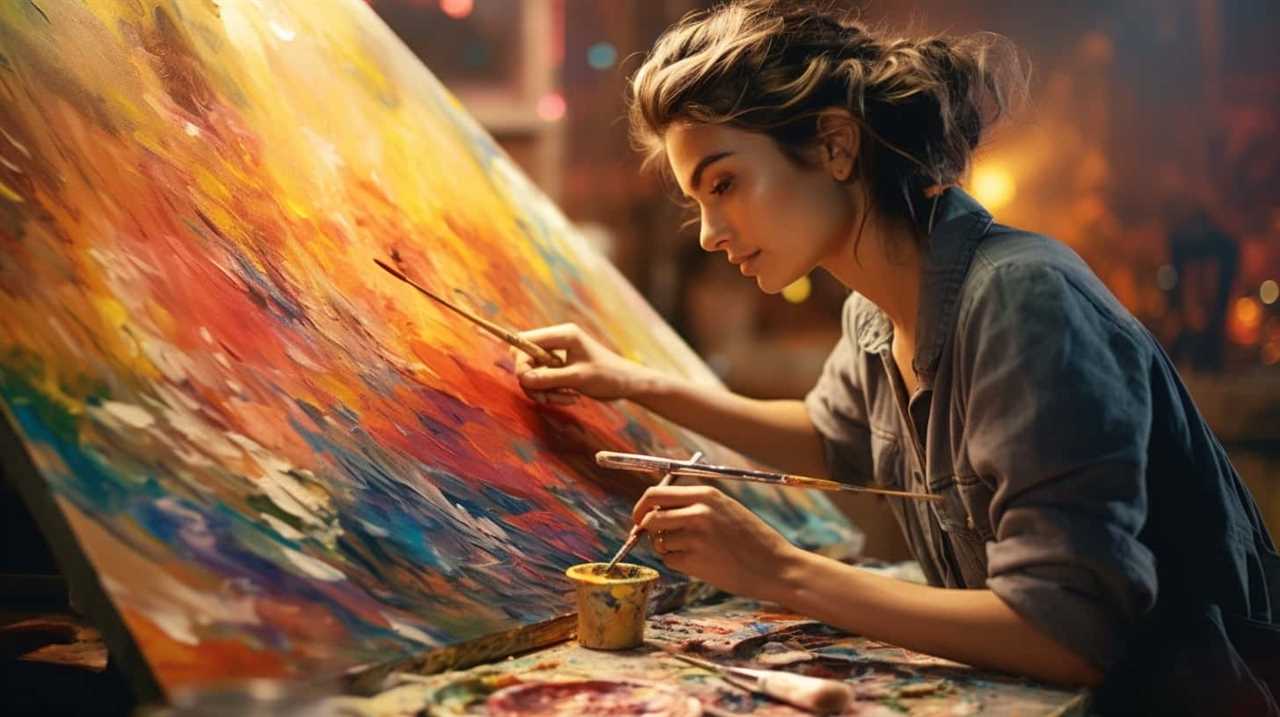
Another strategy is to leverage existing networks and partnerships. Collaborating with galleries, museums, and art organizations that have a similar target audience can help expand our reach and attract the right viewers to our exhibitions.
Ultimately, understanding our target audience allows us to craft marketing messages that resonate with them, select the most appropriate channels for promotion, and create experiences that cater to their interests and desires. By doing so, we can maximize the success of our art exhibitions and achieve our marketing goals.
Collaborative Promotional Campaigns
We can strengthen our marketing and promotional efforts for art exhibitions by engaging in collaborative campaigns with galleries, museums, and art organizations that share our target audience. This strategy allows us to tap into a wider network of potential art enthusiasts and create a buzz around our exhibitions.
Here are three ways collaborative partnerships and joint promotions can enhance our marketing:
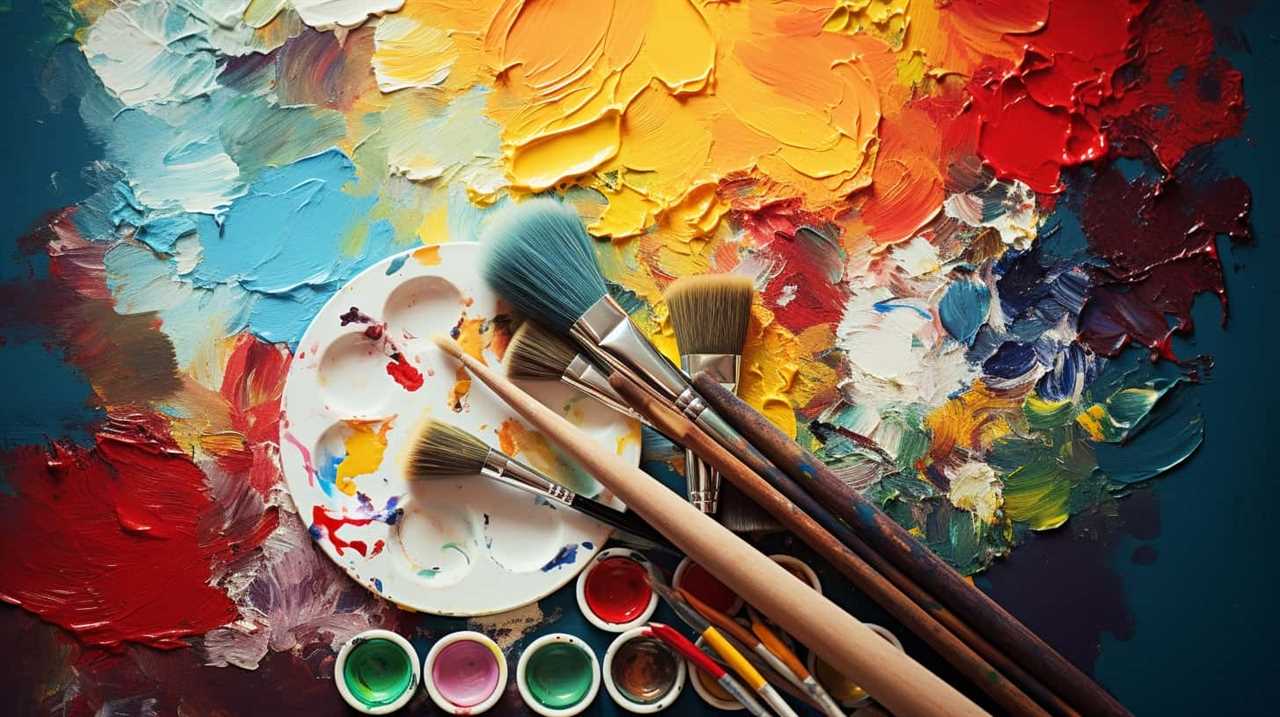
- Increased Exposure: By partnering with other art institutions, we can leverage their existing audience base to reach new art lovers who may not be familiar with our gallery or exhibitions. This exposure can lead to increased foot traffic and potential sales.
- Shared Resources: Collaborative campaigns allow us to pool resources with other galleries, museums, and organizations, enabling us to create more impactful marketing materials and events. By sharing the workload, we can stretch our marketing budget further and maximize our reach.
- Cross-Promotion: Joint promotions provide an opportunity for us to tap into the networks and followers of our collaborative partners. By cross-promoting each other’s exhibitions and events, we can leverage the trust and credibility of our partners to attract a larger audience.
By engaging in collaborative promotional campaigns, we can expand our reach, increase exposure, and make a lasting impact on our target audience.
Now, let’s explore how these efforts can translate into initiating art sales and negotiating prices.
Initiating Art Sales and Negotiating Prices
When initiating art sales and negotiating prices, it is important to start with thorough research and preparation. Understanding the market, the artist’s reputation, and the value of the artwork are crucial steps in this process. Negotiating commissions and art pricing strategies require a careful balance between the artist’s financial goals and the market’s demand for their work.
One effective way to approach pricing negotiations is to consider the artist’s reputation and track record. Artists with a strong portfolio and a history of successful sales can command higher prices for their artwork. On the other hand, emerging artists may need to be more flexible with their pricing to attract buyers and build their reputation.
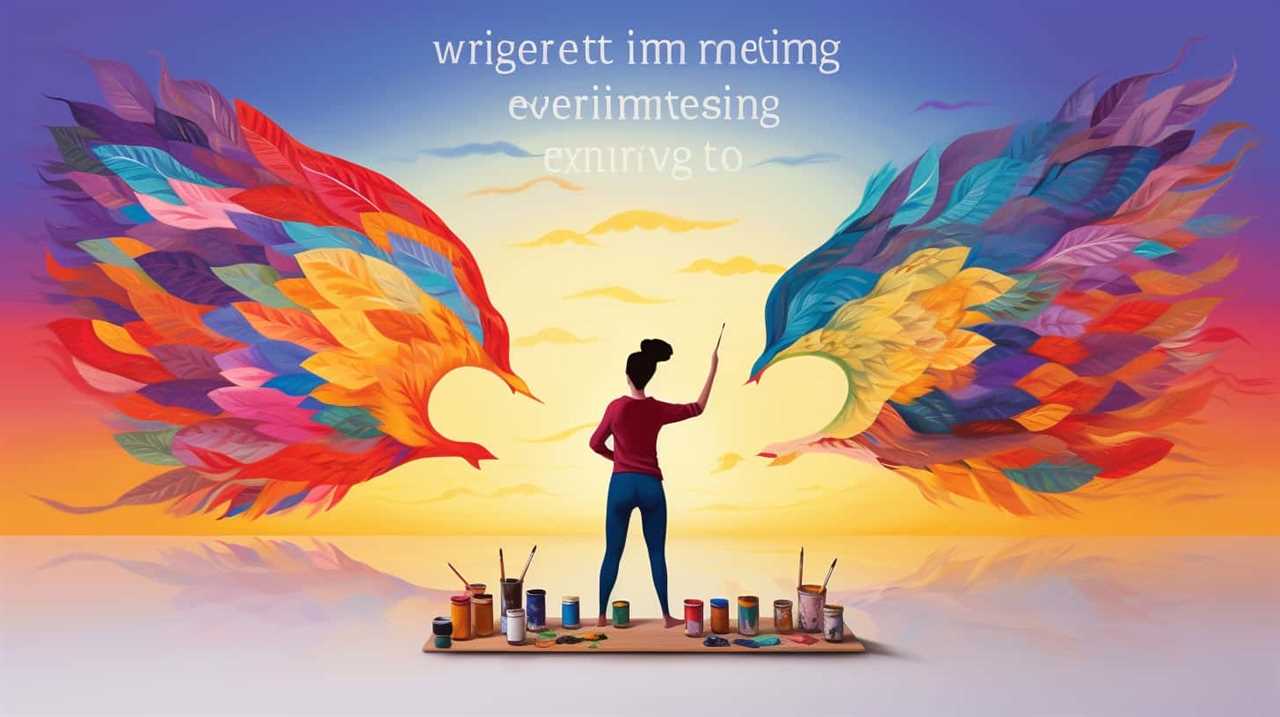
Another strategy to consider is the pricing of similar artworks in the market. Researching the prices of comparable pieces can give you a benchmark to start negotiations. However, it is important to remember that each artwork is unique, and factors such as the artist’s reputation, the piece’s condition, and its historical significance can greatly influence its value.
To help illustrate these strategies, here is a table that compares different art pricing strategies and their potential outcomes:
| Pricing Strategy | Potential Outcome |
|---|---|
| Pricing based on artist reputation and track record | Higher prices, increased demand |
| Pricing based on comparable artwork in the market | Competitive pricing, easier negotiations |
| Pricing based on unique features and historical significance | Higher value for rare and significant pieces |
Understanding the Art Market’s Commercialization
In our exploration of the art market’s commercialization, we delve into the multifaceted ways in which art has become a lucrative industry. The commercialization of the art market presents both challenges and opportunities, shaping the landscape for artists, collectors, and galleries alike.
- Commercialization Challenges: As the art market becomes increasingly commercialized, there’s a risk of losing the essence and authenticity of art. The focus on profit and market trends can overshadow the artistic integrity and creative expression that makes art so unique. It can also create a barrier for emerging artists who may struggle to break into the market due to its commercial nature.
- Market Opportunities: On the other hand, commercialization brings new opportunities for artists to gain exposure and recognition. With the rise of online platforms and social media, artists can reach a global audience, expanding their market potential. Additionally, the commercialization of the art market has attracted investors who see art as a valuable asset and are willing to invest in artists and their work.
Understanding the commercialization of the art market is crucial for both artists and collectors. By recognizing the challenges and embracing the opportunities, individuals can navigate the market and make informed decisions about managing inventory and acquiring artwork.

Managing Inventory and Artwork Acquisition
When it comes to managing inventory and artwork acquisition, there are several key points to consider.
Firstly, tracking artwork availability is crucial in order to know what pieces are currently on hand and what’s in demand.
Secondly, sourcing new pieces requires a strategic approach, whether it be through attending art fairs, networking with artists, or collaborating with other galleries.
Lastly, implementing effective inventory management techniques, such as digital cataloging systems and regular stock checks, is essential for maintaining organization and ensuring artwork is easily accessible for potential buyers.
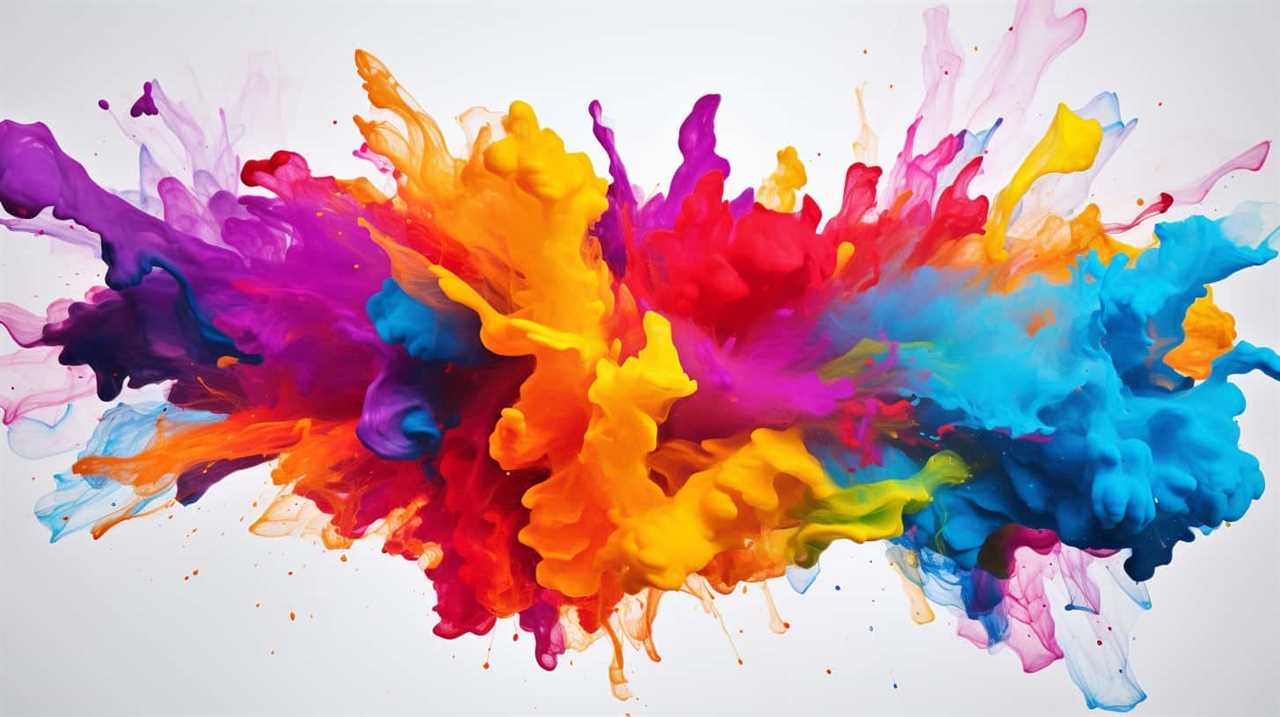
Tracking Artwork Availability
We actively manage our inventory and acquire artwork by tracking its availability. This allows us to stay informed about the current state of the art market and make strategic decisions based on our analysis. Here are three key reasons why tracking artwork availability is crucial in the art market:
- Opportunity for unique acquisitions: By closely monitoring the availability of artwork, we can identify unique pieces that align with our clients’ tastes and preferences. This gives us the opportunity to acquire exceptional artworks that may not be easily accessible to others.
- Market trends and dynamics: Tracking artwork availability provides us with valuable insights into market trends and dynamics. We can observe which artists and styles are in high demand and adjust our inventory accordingly. This knowledge allows us to stay ahead of the curve and offer our clients the latest and most sought-after artworks.
- Strategic inventory management: By tracking artwork availability, we can strategically manage our inventory. We can identify gaps in our collection and actively seek out artworks that complement our existing offerings. This ensures that we’ve a diverse and curated selection of artwork to meet the varied tastes and preferences of our clientele.
Tracking artwork availability is an essential aspect of our art market analysis. It enables us to make informed decisions, acquire unique artworks, and provide our clients with a diverse and exceptional collection of art.
Sourcing New Pieces
To ensure a diverse and constantly updated inventory, our team actively sources new artwork for acquisition and manages our inventory. We employ various sourcing strategies to discover talented artists and acquire their work.
One of our strategies is to attend art fairs and exhibitions, where we can explore a wide range of artworks from both established and emerging artists. This allows us to stay abreast of the latest trends and discover new talent.
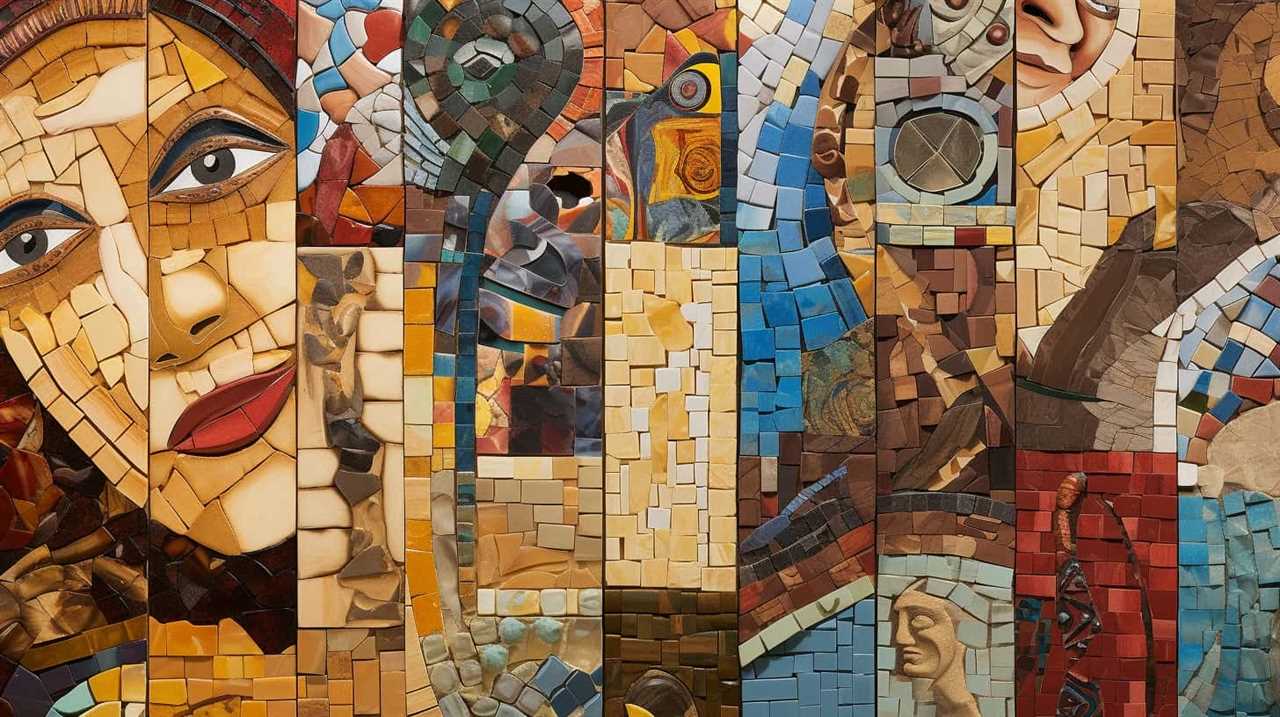
Additionally, we actively engage with artists and their representatives to build relationships and gain insight into their creative processes. This personal connection not only helps us acquire their artwork but also provides us with valuable knowledge about their artistic journey.
Inventory Management Techniques
Our team actively manages our inventory and acquires artwork using effective techniques. Inventory tracking is crucial in ensuring that we have a clear overview of our collection at all times. By implementing an advanced inventory management system, we are able to track the location, condition, and availability of each artwork, allowing us to provide accurate information to our clients.
Additionally, we utilize artwork valuation techniques to determine the worth of each piece in our inventory. This involves conducting thorough research on the artist, analyzing market trends, and consulting with experts in the field. By understanding the value of our artworks, we are able to make informed decisions regarding pricing, acquisitions, and potential sales.
This comprehensive approach to inventory management and artwork valuation enables us to navigate the art market with confidence and liberation.

Art Fairs and Their Impact on Gallery Sales
Art fairs significantly influence gallery sales by creating opportunities for artists, collectors, and dealers to connect and transact within a dynamic and immersive environment. The economic impact of art fairs can’t be understated. These events attract a large number of attendees, including high-profile collectors and art enthusiasts, which leads to increased sales for galleries.
Art fairs provide a platform for emerging artists to gain exposure and visibility in the art market. They offer a unique opportunity for these artists to showcase their work alongside established names, allowing them to reach a wider audience and potentially secure representation by galleries.
The immersive environment of art fairs plays a crucial role in driving sales. By providing a curated and visually stimulating experience, art fairs create a sense of urgency and excitement among collectors. The limited time frame of these events encourages impulse purchases, leading to immediate sales for galleries. Additionally, the presence of multiple galleries in a single location fosters competition, pushing galleries to showcase their best and most sought-after pieces.
Art fairs also facilitate networking and relationship-building within the art community. Artists have the chance to engage with collectors and dealers, forging connections that can lead to future collaborations, exhibitions, and sales. Likewise, collectors and dealers can discover new artists and establish direct relationships with them, bypassing traditional gallery channels.
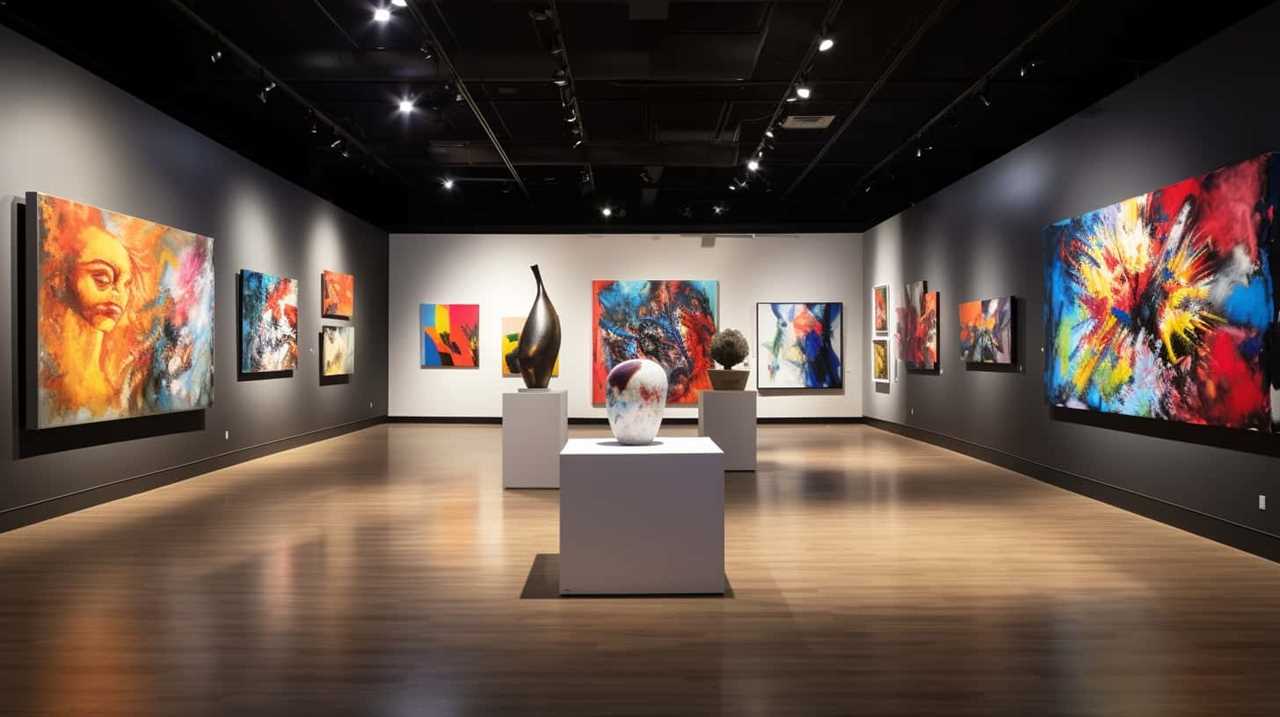
Challenges and Opportunities in the Art Market
As we delve into the challenges and opportunities in the art market, it becomes apparent that navigating this industry requires adaptability, persistence, and a keen understanding of market trends. The art market, like any other market, isn’t without its obstacles. However, for those who are willing to take on these challenges, there are also great opportunities to be found.
Art market transparency: One of the biggest challenges in the art market is the lack of transparency. Prices are often negotiated behind closed doors, making it difficult for both buyers and sellers to gauge the true value of a piece. This lack of transparency can lead to a lack of trust and hinder the growth of the market.
Emerging artists’ challenges: Emerging artists face numerous challenges in the art market. They often struggle to gain recognition and establish themselves in a crowded field. Limited access to resources and networks can make it difficult for them to promote their work and connect with potential buyers and galleries. However, with the right support and opportunities, emerging artists can break through and find success.
Opportunities for growth: Despite the challenges, the art market also presents numerous opportunities for growth. With advancements in technology, artists and galleries can now reach a global audience, expanding their potential customer base. Additionally, the increasing interest in art as an investment has opened up new avenues for artists and collectors to monetize their work. By embracing these opportunities and adapting to the changing landscape, individuals can thrive in the art market.
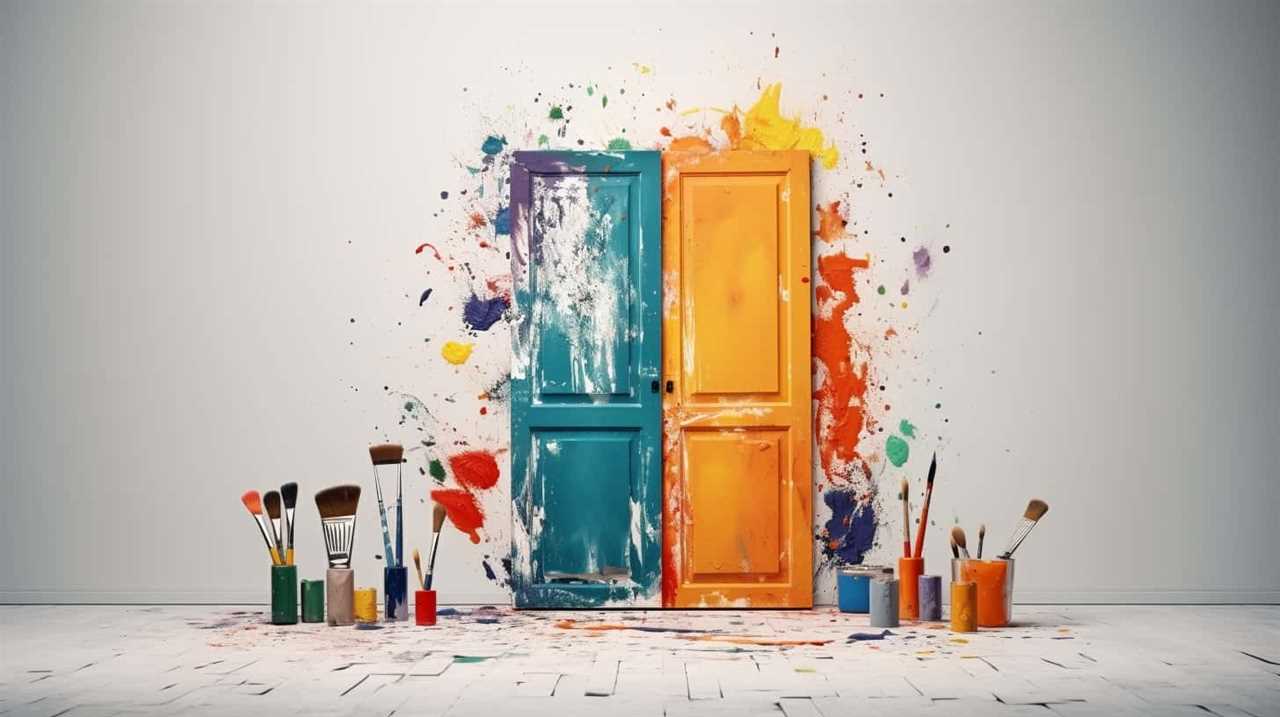
Frequently Asked Questions
How Can I Determine the Authenticity of an Artwork?
Determining the authenticity of an artwork requires careful investigation. Provenance research, which examines the artwork’s history and ownership, can help identify any potential art forgery. It is crucial for buyers to be vigilant and informed in the art market.
What Are Some Effective Marketing Strategies for Promoting Art Exhibitions?
Social media campaigns and influencer partnerships are effective marketing strategies for promoting art exhibitions. By leveraging the power of digital platforms and collaborating with influential individuals, we can reach a wider audience and generate buzz around our exhibitions.
How Do Galleries Decide Which Artists to Represent?
When deciding which artists to represent, galleries carefully consider a range of factors including artistic style, market demand, and potential for growth. This selection process is crucial for galleries to establish a strong and diverse roster of artists.
What Are Some Common Challenges Faced by Galleries in the Art Market?
In the art market, galleries face numerous challenges. Art market trends constantly shift, making it difficult to predict demand. Additionally, emerging artists’ influence can be both beneficial and challenging, as galleries strive to stay relevant and attract collectors.

How Do Art Fairs Affect the Pricing and Sales of Artworks in Galleries?
Art fairs, like a gust of wind through a gallery, can significantly impact pricing and sales. The influence of these events on gallery pricing and trends cannot be ignored, as they shape the art market landscape.
Conclusion
In conclusion, navigating the art market requires a comprehensive understanding of the various factors at play.
Galleries play a crucial role in art sales, curating collections and building relationships with artists and collectors.
Pricing strategies and market trends must be carefully considered, while marketing and promoting exhibitions are essential for success.

Managing inventory and acquiring artwork require careful attention, and art fairs can have a significant impact on gallery sales.
Despite the challenges, the art market offers numerous opportunities for those who are willing to navigate its complexities.
Lauren’s talent in writing is matched by her passion for storytelling. Her love for books and deep understanding of culture and entertainment add a distinct flavor to her work. As our media and press contact, Lauren skillfully bridges the gap between afterQuotes and the broader media landscape, bringing our message to a wider audience.
